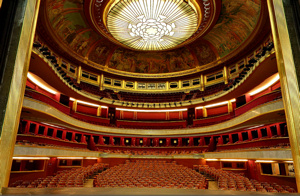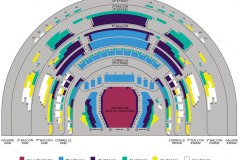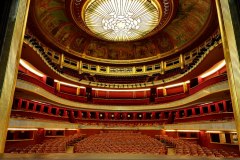Alice Sara Ott
Mo | Tu | We | Th | Fr | Sa | Su |
Alice Sara Ott, piano
Alice Sara Ott invites us to (re)discover John Field, the composer behind the nocturne form.
Too rarely heard in France, even though she recently performed at the Seine Musicale and was an artist-in-residence at Radio France, the Japanese-German pianist comes to Avenue Montaigne for the first time in recital with a highly personal program combining major works by Beethoven with the lesser-known Nocturnes of John Field. The nocturne is one of the most popular and beloved musical forms. Yet many are unaware of its creator: John Field. The musical legacy of this contemporary of Beethoven influenced not only Chopin, but generations of composers up to the present day. On stage and on record with Deutsche Grammophon, Alice Sara Ott seeks to share the story of this little-known yet essential figure in the history of the piano.
Program and cast
Alice Sara Ott, piano
Program
Field: Nocturnes Nos. 17, 1, 2, 4, 10, 14, 16, 9, 12
Beethoven: Sonata No. 19 in G minor, Op. 49 No. 1
Sonata No. 30 in E major, Op. 109
Sonata No. 14 in C-sharp minor, Op. 27 No. 2 Clair de lune
Théâtre des Champs-Élysées

The Théâtre des Champs- Elysées is undoubtedly one of the finest venues in Paris . Built in 1913 , it has the distinction of having been designed by a group of artists architects Henry Van de Velde and Auguste Perret , the painter and sculptor Antoine Bourdelle , the painter Maurice Denis , and the crystal- René Lalique to do mention the main ones . He was the first Parisian theater to be built entirely of reinforced concrete.
Restoration of the Great Hall devoted to operatic performances , symphony concerts and dance was decided in 1985. Two years later , on 23 September 1987, the theater reopened its doors , completely renovated. Fifteen years after this important work it was decided to undertake a new renovation campaign , but to prevent the complete closure of the theater for an entire season , work is now carried by step during the summer . Then it is to replace aging equipment , to remedy wear certain parts of the theater and improve spectator comfort and artists during their visit . Thus in recent years, including the work involved the renovation of marble facade, replacing the carpet in the room with wooden floors , installation of a new fully decorated wooden concert to a significant improvement of acoustics, the orchestra pit and stage below .
The Théâtre des Champs- Elysées is now a modern working tool receiving each year nearly 300,000 spectators and a few thousands of artists and collaborators.
The Théâtre des Champs- Elysées , the jewel of French architecture of the twentieth century, was in 1953 one of the first buildings of contemporary architectural heritage to be classified as historic monuments . Since 1970 the Caisse des Dépôts owns the entire building 15 avenue Montaigne and principal patron of the theater.
For over a century, Théâtre des Champs-Elysées has been the place where the most celebrated artists have come to make their names in Paris. The world’s finest orchestras and world-class soloists have always been a fixture at the Theatre. Théâtre des Champs-Elysées presents more than 200 concerts each year and is renowned for its outstanding performances of all genres, from classical music concerts and staged opera to contemporary dance and jazz.
How to reach us:
Subway: Alma-Marceau (line 9), Franklin D.Roosevelt (line 1), Pont de l’Alma (RER line C)
Bus: n° 42, 63, 72, 80, 92
Taxi station: Place de l’Alma, corner of avenue George V
Car park: Alma George V. The entrance is in front of n° 19, avenue George V
Fixed rate depending on the length of the performance. Payment upon entering.

 EN
EN DE
DE IT
IT FR
FR ES
ES RU
RU JP
JP RO
RO
 Seating plan
Seating plan 